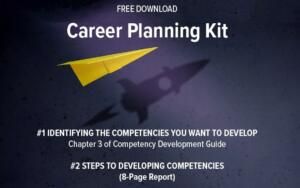Along with many other changes in how employee performance is managed, there is a change in the focus and intent of career development discussions between an employee and his/her supervisor. In many organizations, employees and managers no longer just think of a career ladder concept where time in grade and good performance result in a higher grade or band, with higher compensation. Skills and job responsibilities at one level no longer guarantee movement to the next level.
Organizations are creating related career streams where an employee can develop a set of job competencies that are generic to multiple career streams. The career development discussions then focus on how well the employee is developing the competencies that are critical to career mobility. The supervisor provides guidance as to which critical competencies can be developed in the employee’s present job and which ones require development outside the present job. The employee then possesses an awareness and a foundation to determine which career streams, i.e., Operations Management, Human Resources, Engineering, Finance, etc. have core critical competency requirements in common and would lend themselves to mobility across traditional functional lines.
Job posting descriptions can now identify the critical competencies for specific positions allowing supervisors and employees to match the new position requirements with the specific critical competencies that the employee has developed in the present position. Employees can pursue opportunities that develop additional competencies by moving across functional lines. The use of broad banding compensation processes lends itself to a career streams preparation approach, eliminating artificial barriers to movement because of grades/classifications, salary ranges, etc.Organizations can plan for future needs by assessing which career streams are growing and which are shrinking.
Employees can also be provided information as to which represent the growing needs of the company. The career development discussion has changed the focus from just moving to the next rung on a functional ladder to preparation for entering into multiple career streams that demand certain common critical competencies. The supervisor role is one of providing information and opportunities to develop critical job competencies that enhance career development. With this support, an employee can build existing effective competencies and develop a plan to maximize their use in any career move.
Read more in Workitect’s Competency Development Guide.
 To learn more about our products and services, and how competencies and competency models can help your organization, call 800-870-9490, email info@workitect.com
To learn more about our products and services, and how competencies and competency models can help your organization, call 800-870-9490, email info@workitect.com
or use the contact form at Workitect.
©️2024, Workitect, Inc.


Leave A Comment